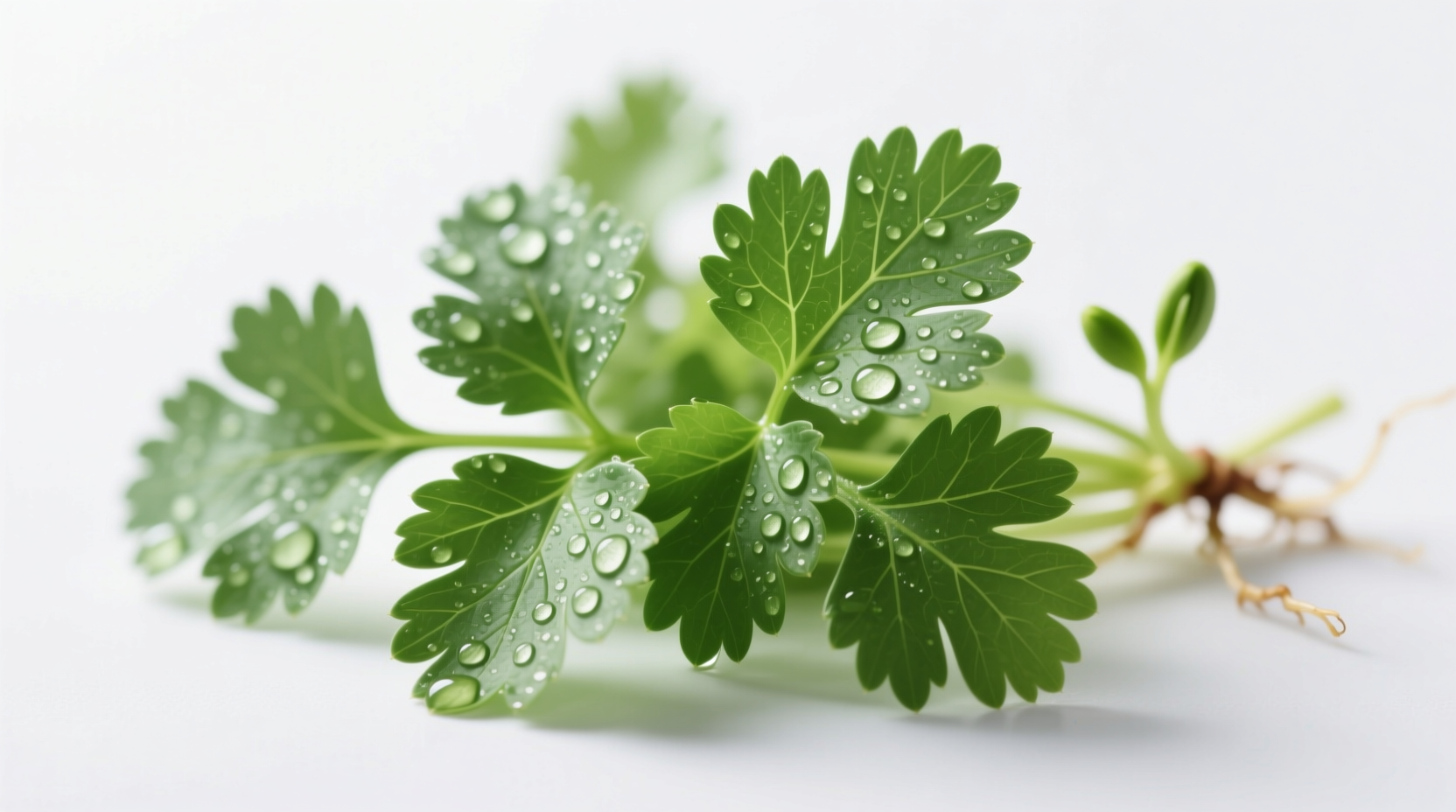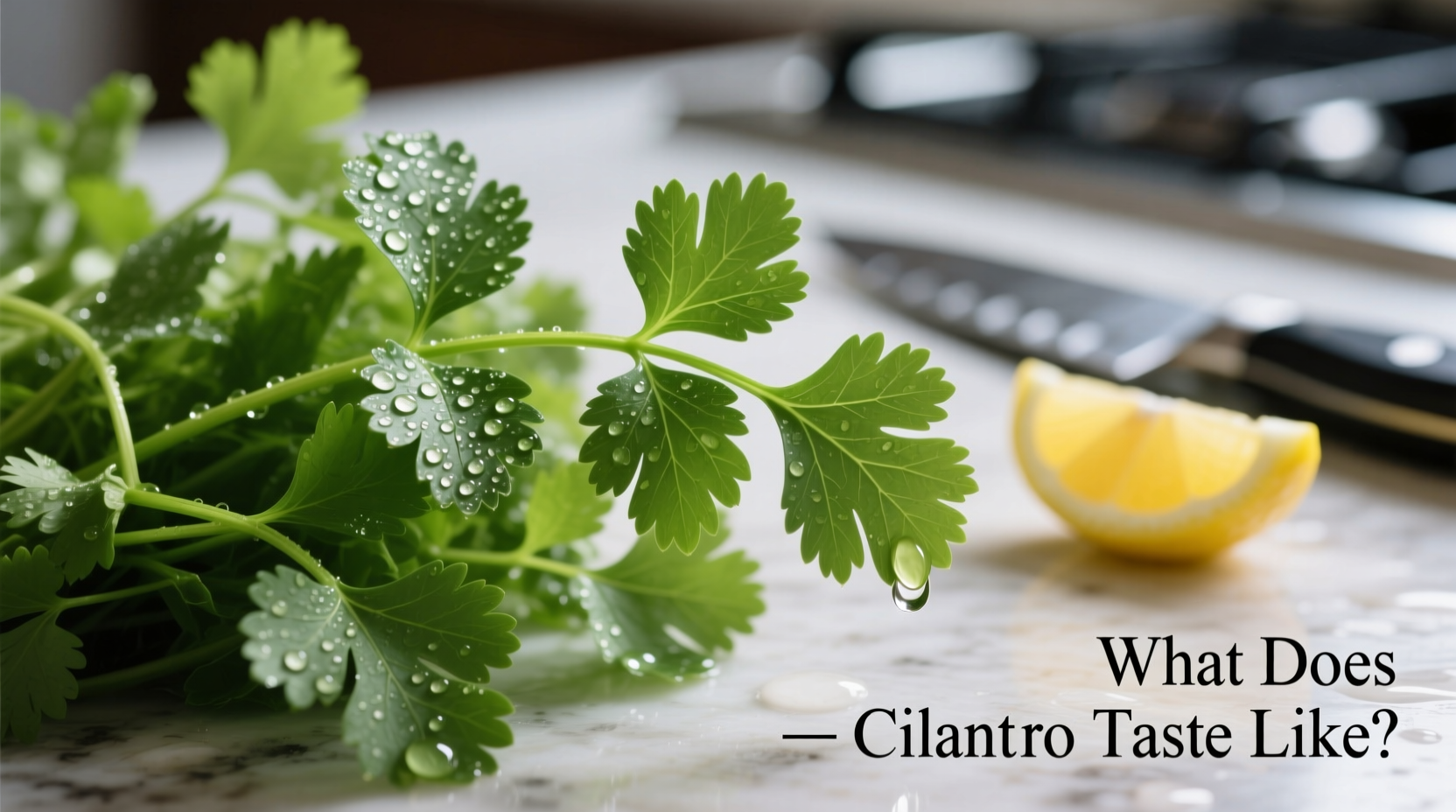If you've ever wondered what does cilantro taste like, you're not alone. This polarizing herb divides eaters worldwide with its distinctive flavor profile that some describe as fresh and vibrant while others detect a distinctly soapy quality. Understanding cilantro's complex taste characteristics helps home cooks and food enthusiasts make informed decisions about using this versatile herb.
The Core Flavor Profile of Cilantro
For the majority of people (about 79% of the population), cilantro offers a refreshing, citrus-forward flavor with distinct herbal notes. When you crush a fresh cilantro leaf between your fingers, you'll release volatile compounds that create:
- A bright lemon-lime citrus aroma
- Subtle peppery undertones
- Fresh green herbal notes similar to parsley but more complex
- A clean, slightly floral finish
Professional chefs describe cilantro's flavor as "the sunshine of the herb world"—it adds brightness to dishes without overwhelming other ingredients. When used properly, it enhances rather than dominates, making it invaluable in salsas, guacamole, ceviche, and many Asian and Latin American dishes.
Why Cilantro Tastes Soapy to Some People
The why does cilantro taste like soap phenomenon affects approximately one in five people globally. This isn't merely a preference—it's a genetically determined sensory experience. Research published in the journal Chemical Senses identified specific olfactory-receptor genes (OR6A2) that make certain individuals particularly sensitive to aldehyde compounds found in both cilantro and soap.
| Genetic Profile | Percentage of Population | Perceived Cilantro Taste | Scientific Explanation |
|---|---|---|---|
| Non-soapy tasters | ~79% | Citrusy, herbal, fresh | Normal aldehyde detection without soap association |
| Soapy tasters | ~21% | Soapy, metallic, unpleasant | OR6A2 gene variant enhances aldehyde sensitivity |
This genetic variation explains why family members might have completely different reactions to the same cilantro dish. The soapy perception isn't psychological—it's a genuine sensory experience rooted in DNA. Interestingly, this genetic trait shows significant regional variation, with higher prevalence among people of European descent (24%) compared to those of Latin American (4-21%) or Middle Eastern (3-17%) ancestry.
Cilantro vs. Parsley: Understanding the Taste Difference
Many people confuse cilantro with flat-leaf parsley, but their flavor profiles differ significantly. Understanding what does fresh cilantro taste like compared to parsley helps prevent culinary mistakes:
- Cilantro: Strong citrus notes (lemon/lime), herbal with peppery finish, more intense aroma
- Parsley: Milder, grassier flavor with subtle bitterness, less aromatic
When substituting one for the other, you'll notice immediate differences in your dish's flavor profile. Cilantro's distinctive taste works best in Mexican, Thai, Indian, and Middle Eastern cuisines, while parsley shines in Mediterranean and European dishes.

Practical Tips for Using Cilantro in Cooking
Knowing how to describe cilantro taste helps you use it effectively. Here's how to maximize its flavor potential:
When Cilantro Works Best
Cilantro performs exceptionally well in:
- Fresh applications (salsas, guacamole, salads)
- Cold dishes (ceviche, chilled soups)
- As a finishing herb (sprinkled on completed dishes)
- With ingredients that complement its citrus notes (lime, avocado, chilies)
When to Avoid Cilantro
Cilantro's flavor diminishes and can become bitter when:
- Exposed to high heat for extended periods
- Used in creamy or dairy-based sauces
- Paired with strongly flavored meats like lamb
- Added to dishes requiring long cooking times
For soapy tasters wondering is cilantro supposed to taste like soap, the answer is yes—for your specific genetic makeup. If you're in this group, consider these alternatives:
- Parsley (for visual similarity without the soapy notes)
- Epazote (in Mexican dishes)
- Thai basil (in Asian recipes)
- Scallion greens (for mild onion flavor)
How to Grow and Select the Best Cilantro
Freshness dramatically impacts what does cilantro taste like in your dishes. Follow these selection tips:
- Choose bright green, crisp leaves without yellowing
- Smell the bunch—fresh cilantro should have a vibrant citrus aroma
- Avoid wilted or slimy leaves
- Store with stems in water (like flowers) in the refrigerator
- Use within 3-4 days for optimal flavor
Home gardeners can grow cilantro in containers with partial sun. Harvest leaves when plants reach 6 inches tall, cutting outer leaves first to encourage continuous growth. The seeds (coriander) offer a completely different flavor profile—warm, citrusy, and slightly sweet—making them valuable in their own right.
Understanding Regional Cilantro Preferences
Cultural exposure influences how people perceive cilantro's flavor. Studies show that repeated exposure can help soapy tasters develop a tolerance for cilantro. In regions where cilantro features prominently in traditional cuisine—including Mexico, Thailand, India, and Vietnam—people are more likely to appreciate its flavor regardless of genetic predisposition.
This cultural adaptation demonstrates that while genetics determine initial reactions, culinary experience can reshape our perception over time. For those wondering why do I taste soap when eating cilantro, gradual exposure in small amounts within familiar dishes may help develop appreciation for this versatile herb.
Conclusion: Embracing Cilantro's Unique Flavor
Understanding what does cilantro taste like helps you make informed choices in the kitchen. Whether you love its bright citrus notes or detect soapy undertones, recognizing cilantro's distinctive flavor profile allows you to use it effectively—or choose suitable alternatives. By considering genetic factors, culinary applications, and cultural context, you can navigate this polarizing herb with confidence in your cooking adventures.











 浙公网安备
33010002000092号
浙公网安备
33010002000092号 浙B2-20120091-4
浙B2-20120091-4